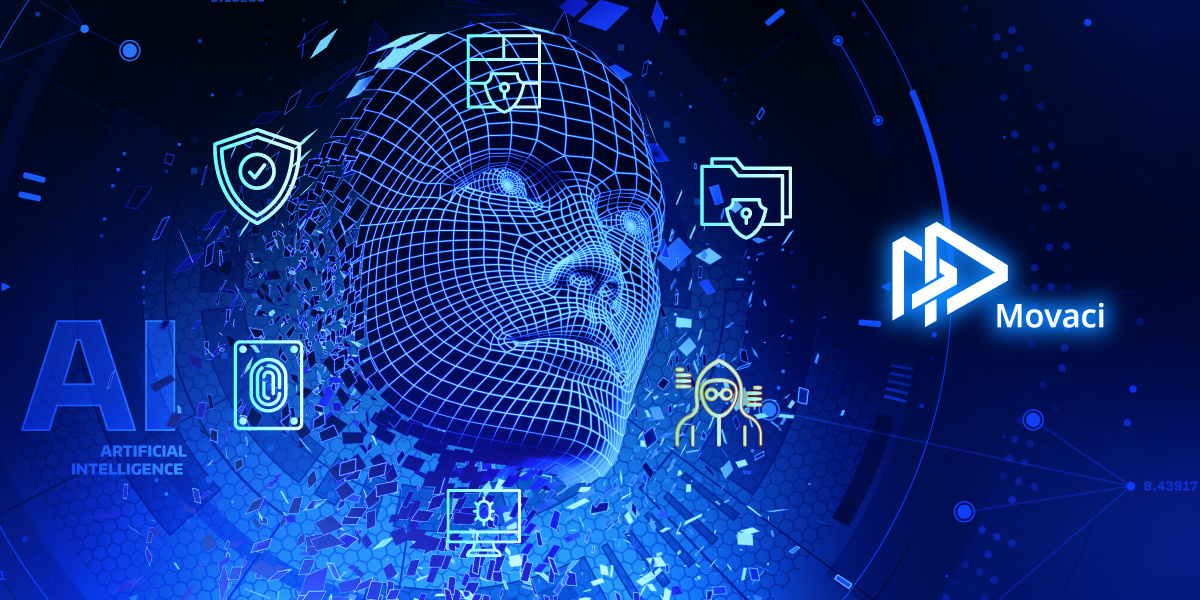As we navigate through 2024, the world of IT security is changing fast, thanks to the power of...
The Rise of AI in Cybersecurity: Friend or Foe?
In 2019, an undisclosed UK-based energy company fell victim to a sophisticated cyber-attack that leveraged artificial intelligence (AI) to create a deepfake audio of the CEO's voice. This incident highlighted the dual role of AI in cybersecurity: As a formidable adversary and the necessity to utilize AI as a powerful defender. In this article, we explore how AI is transforming cybersecurity, enhancing defenses, and being weaponized by attackers. We also provide actionable strategies for businesses to stay ahead in this evolving landscape.
AI Advancing Cybersecurity Defenses
AI's impact on cybersecurity is profound. Here are some ways AI is enhancing defenses:
- Threat Detection and Response: AI algorithms can analyze network traffic and user behavior to detect anomalies that may indicate a cyber-attack. Machine learning models can identify new threats based on patterns from previous attacks, enabling faster and more accurate threat detection.
- Automated Security Operations and MDR: AI can automate routine security tasks, such as patch management and vulnerability scanning. This not only reduces the workload on security teams but also ensures that these tasks are performed consistently and promptly. Pared with the Managed Detection and Response teams who utilize these tools, this is a powerful combination for incident management and resolution.
- Predictive Analytics: By analyzing historical data, AI can predict potential security incidents before they occur. This proactive approach allows businesses to strengthen their defenses and mitigate risks before they become critical issues.
- Enhanced Authentication: AI-powered systems can improve authentication processes by analyzing biometric data, such as facial recognition and fingerprint scanning. This adds an extra layer of security, making it more difficult for unauthorized users to gain access.
- Deepfake Analysis: Technologies such as Sensity AI (previously Deeptrace) have developed AI-based solutions specifically designed to detect deepfakes. Their technology analyzes various aspects of videos and audio to identify deepfake content with high accuracy
AI as a Weapon for Attackers
While AI offers numerous benefits for cybersecurity, it also presents new challenges. Cybercriminals are leveraging AI to enhance their attacks in the following ways:
- Automated Attacks: AI can be used to automate phishing attacks, making them more sophisticated and harder to detect. AI algorithms can generate convincing phishing emails that mimic legitimate communications, increasing the likelihood of success.
- Evasion Techniques: Attackers are using AI to develop malware that can evade traditional security measures. AI-powered malware can adapt its behavior to avoid detection by security systems, making it more difficult to identify and neutralize.
- Deepfake Technology: AI-generated deepfakes can be used to create realistic but fake audio and video content. This technology can be exploited for social engineering attacks, such as impersonating executives to authorize fraudulent transactions.
- Data Poisoning: Cybercriminals can manipulate AI training data to corrupt machine learning models. This can lead to incorrect threat assessments and allow attackers to bypass security measures undetected.
Staying Ahead: Strategies for Individuals and Businesses
To stay ahead in the AI-driven cybersecurity landscape, we have handpicked several strategies for both individuals and businesses to consider:
- Invest in AI-Powered Security Solutions: Implement AI-driven security tools that can enhance threat detection, automate security operations, and provide predictive analytics. These solutions can help businesses stay one step ahead of cyber threats.
- Continuous Monitoring and Adaptation: Regularly monitor and update yourself and your staff on trusted AI models. Develop and enforce comprehensive AI use policies within your organization clearly defining trusted and non-trusted technologies. Ensure that you only use AI systems that are developed for ethical use with clearly defined guardrails.
- Employee Training, Awareness, and Robust Validation Processes: Educate employees about the potential risks associated with AI-driven attacks, such as phishing and deepfakes. Regular training can help employees recognize and respond to these threats effectively. Robust internal processes designed to validate sensitive or high-risk requests can negate sophisticated vishing and phishing attacks.
- Collaboration and Information Sharing: Participate in industry collaborations and information-sharing initiatives to stay informed about the latest threats and best practices. Sharing knowledge and resources can strengthen the collective defense against cyber-attacks.
- Understand the risk: While AI models can provide valuable insights and assistance, they also process and store the information you provide. This means that sensitive or personal data could potentially be exposed to unauthorized access or misuse. If unsure, avoid sharing confidential personal or business information. Ensuring that the platform you are using has robust data privacy and security measures in place can help you understand how you should use it.
Conclusion
AI is transforming the cybersecurity landscape, offering both opportunities and challenges. By leveraging AI-powered security solutions, continuously monitoring and adapting, educating employees, collaborating with industry peers, and adhering to ethical AI practices, businesses can stay ahead of cyber threats and protect their valuable assets.
Movaci Services that Defend Against AI Threats
If you need help preparing yourself or your business for the AI revolution, Movaci has experience implementing multiple proactive defensive technologies. Reach out to us at sales@movaci.com to schedule a free initial consultation session.
Take advantage of a FREE
30-minute consultation.
A solutions expert will visit with you about your technology and security to help you find your next step.




2025-1.jpg?height=200&name=Movaci-Blog-image-(B)2025-1.jpg)